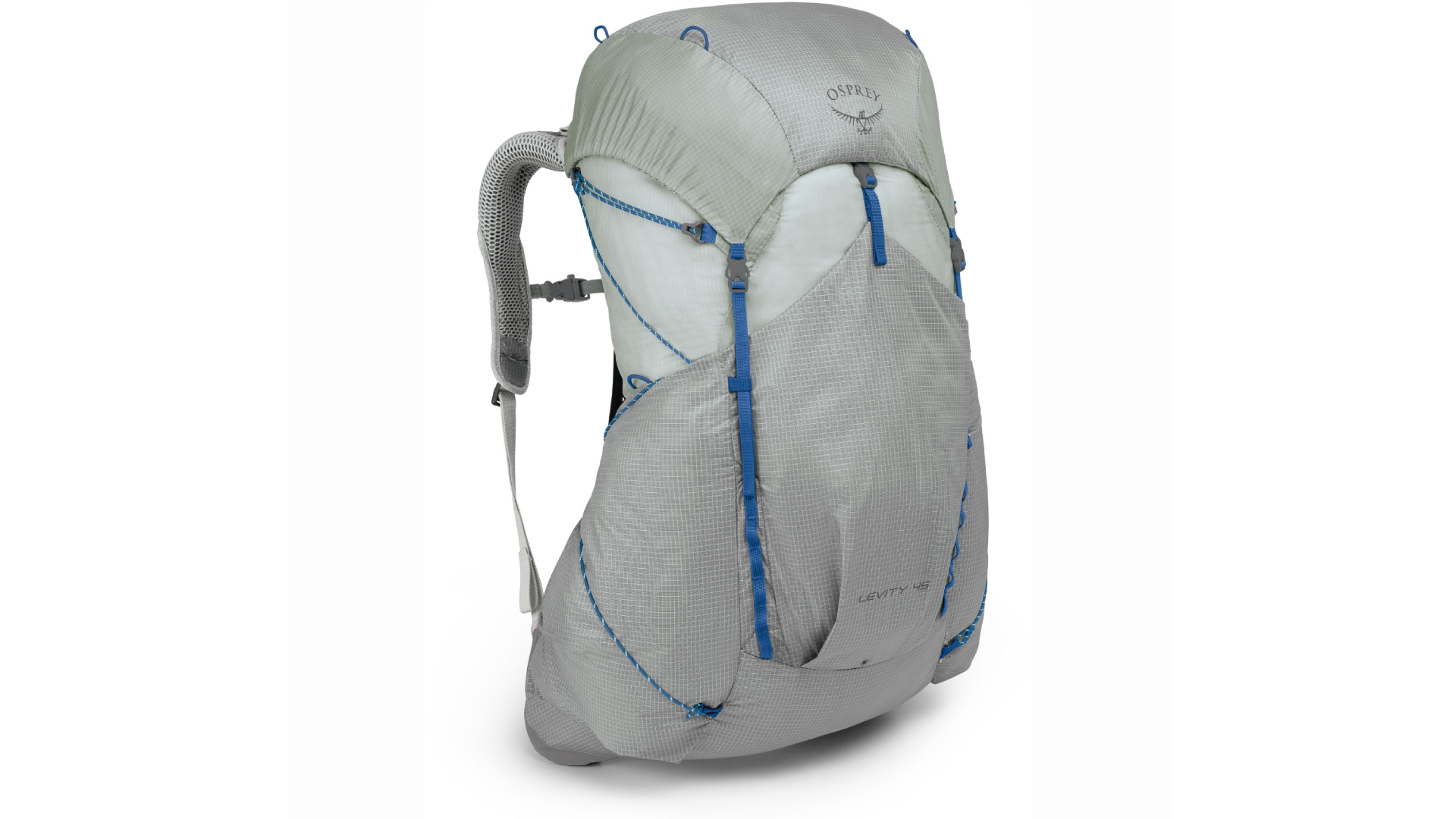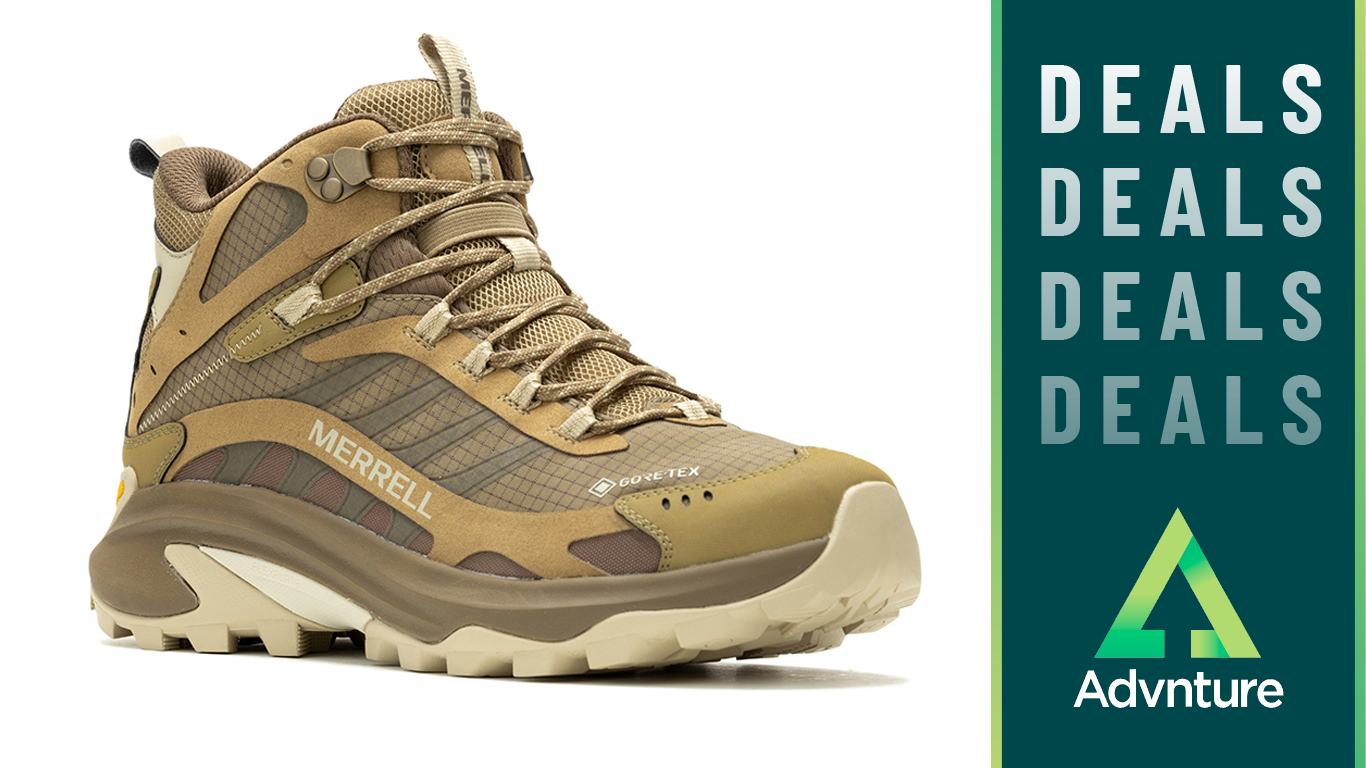Advnture Verdict
If you’re tempted to go lighter for your next trip but not willing to sacrifice the carrying comfort of an internal framed pack, there’s probably no better option than the Osprey Levity 45. It’s roomy and functional, while the well-ventilated harness and back system are also ideal for warmer-weather adventures, or hot and humid climates.
Pros
- +
Suspended mesh back panel keeps you cool
- +
Great build quality
- +
Hydration-compatible
- +
Comfortable harness and hip belt
Cons
- -
No stretch pockets
- -
No raincover
- -
Translucent fabric
- -
Reaches its limits with loads of 10kg+
You can trust Advnture
First impressions
Osprey is one of the best-known brands in backpacks, renowned for their build quality and carrying comfort. But the Levity (or women’s Lumina) was the US manufacturer’s first foray into the growing category of ultralight packs.
In terms of overall design, it shares some similarities with the best-selling Osprey Exos (women’s Eja) pack, utilising essentially the same ExoForm harness and AirSpeed trampoline-style back system. However, the Levity is considerably lighter than the Exos, a feat that has been achieved by streamlining the feature set and utilising a new, superlight-yet-tough ripstop nylon called Nanofly.
The result is a lightweight backpack that carries very well, with a back system that is particularly well suited to hot, sweaty hikes, since the suspended mesh delivers excellent airflow.
Unlike some other ultralight packs, the Levity is internally framed, giving it much more rigidity and stability than many rivals. Obviously, this means it isn’t the absolute lightest of the lightweights, but it does translate into improved carrying comfort on the trail, while still tipping the scales at well under a kilo.
It also makes this sack a little easier and quicker to pack than others, since it isn’t so essential to distribute weight as carefully. Having said that, the curved back panel and unusual ‘winged’ main compartment do impinge on the load space slightly. Nevertheless, the Osprey does more than enough to merit its place on our list of the best hiking backpacks.
• RRP: $250 (US) / £180 (UK)
• Volume: 45L / 2,746 cu in
• Weight: 800g/ 1 lb 12oz
• Dimensions (HxWxD): 68 x 40 x 30cm / 27 x 16 x 12in
• Sizes: S/M/L back lengths
• Fabric: Nanofly UHMWPE ripstop x 100D HT nylon/30D ripstop nylon-Cordura
In the field
This proved to be a roomy and practical pack – we carried everything we needed for a three-week jaunt along the 300-mile Cambrian Way, which runs the length of Wales.
If you need even more carrying capacity (see: What size backpack do I need?), the Levity comes in a 60-litre version as well as this 45-litre size. We’d watch your overall trail weight though. On test, we found the harness performs well for loads up to about 10kg, although beyond that we felt it flex and give noticeably.
The pack has an internal top compression strap plus removable side compression cords, to help you further stabilise the load. However, the cords in particular are so thin that we found then to be of limited use compared to conventional webbing. This led to some pronounced bulging with a full load. You may want to remove them altogether. On the other hand, they do effectively secure tent poles or trekking poles that are stashed in the side pockets, so if employed for that purpose they do serve a useful function. For more on all of these features, check out our guides on how to choose a backpack and explainer on the various parts of a backpack.
Inside the main compartment a sleeve allows you to carry a hydration reservoir, and an outlet at the top of the back panel means you can thread a hose through to attach it to a pack stap. The Levity has a fixed lid with a single large, zipped lid pocket plus voluminous front and side pockets. The front pocket has a bellows design and a top clip, so it is possible to stash waterproof jackets or spare layers inside, while the side pockets can be accessed from two directions, making them the ideal place to store soft-sided flasks or water bottles (see: best hiking water bottles).
There are daisy chain loops on the front of the pack, plus additional gear loops on the lid and base, which can be used for lashing additional bits of kit. Inevitably, our tent took a soaking a couple of days into our Cambrian Way trek, so from then on it was slung beneath the pack via two Sea to Summit accessory straps, an arrangement that performed superbly.
The ripstop Nanofly fabric is tougher than it looks. It’s also very water-resistant, though we’d always advise putting your kit in dry bags before packing it into a rucksack – especially since the Levity isn’t supplied with a raincover. However, in places, the fabric of this pack is extraordinarily thin to the point of being translucent. If you’re used to burly, high-denier packs, this will take some getting used to. All we can say is that it took plenty of punishment and held up well.
An outdoors writer and editor, Matt Jones has been testing kit in the field for nearly a decade. Having worked for both the Ramblers and the Scouts, he knows one or two things about walking and camping, and loves all things adventure, particularly long-distance backpacking, wild camping and climbing mountains – especially in Wales. He’s based in Snowdonia and last year thru-hiked the Cambrian Way, which runs for 298 miles from Cardiff to Conwy, with a total ascent of 73,700 feet – that’s nearly 2½ times the height of Everest. Follow Matt on Instagram and Twitter.


